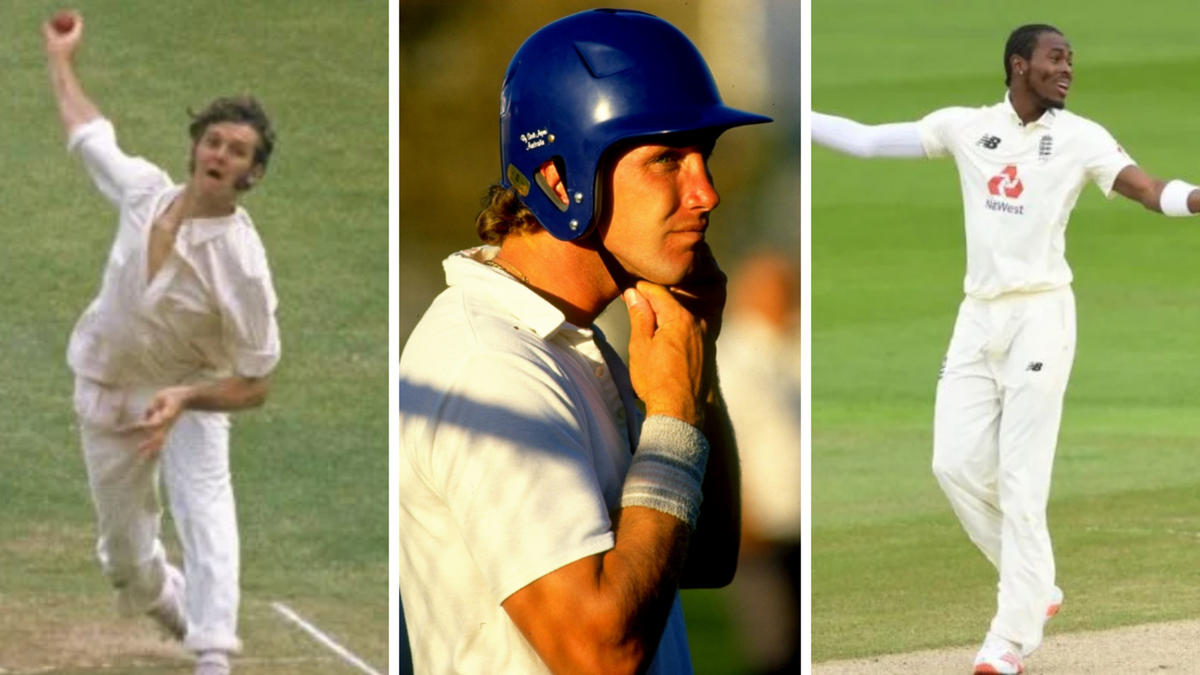
The Ashes, Test cricket’s longest running contest, has seen several sensational performances from cricketers who’s Test match careers have been ordinary outside of the heat of Ashes battle.
While greats of the game like Shane Warne, Ian Botham, Don Bradman and Kevin Pietersen are best known for their Ashes heroics within their outstanding careers, others have peaked in the Ashes cauldron but done little outside of it.
Here is a list of those players who can be collectively known as the flashes in the Ashes pan.
‘Tip’ Foster
Ahead of the 1903/04 Ashes, few gave a chance to the first England team sent officially by MCC. In the first Test match, Australia made 285 and reduced England to 117-4. But debutant Foster – who hailed from a great cricketing family from Worcestershire – made 287, at that point the highest Test score and still the best by a debutant. The match turned on its head, and England claimed the series 4-1.
Since that record 287, Foster made only another 315 runs in 13 innings. However, he did lead England – against South Africa in cricket and against Scotland in football.
Bob Massie
Looking back at Massie’s career, it is scarcely believable that he played only six times for Australia. Massie famously claimed 8-84 and 8-53 on debut, at Lord’s in 1972, and got 4-43 in his next innings, in Trent Bridge. Since then, he got only 11 wickets in eight innings, and found himself out of the Western Australia side after 1974/75.
Rodney Hogg
Twenty-three Australians and four Englishmen signed up for Kerry Packer’s World Series, and England duly won the 1978/79 by a record 5-1 margin. Debutant Hogg, a bowler of great pace and indomitable hostility, kept Australia in the battle with 27 wickets in three Tests (including five five-fors in six innings) and 41 in the series, at 12.12 apiece. From his other 32 Tests, Hogg claimed 82 wickets at 36.29.
[breakout id=”0″][/breakout]
Geoff Miller
Miller’s case makes curious reading. He had 39 wickets at 20.25 from 13 Ashes Tests across three series, and finished as England’s joint-leading wicket-taker in the 1978/79 Ashes. In his other 21 (including a non-Ashes match against Australia), ‘Dusty’ got a wicket per Test – at 50.90.
Terry Alderman
Only eight times has a bowler taken 40 wickets in a Test series, but Alderman is the only one to have done it twice – 42 wickets at 21.26 and 41 wickets at 17.36 on the Ashes tours of 1981, his debut series, and 1989. Add to that the five home Ashes Tests, and the number reads 100 wickets in 17 Tests at 21.17: in his other 24 Tests, he got 70 wickets at 35.70.
Chris Broad
Broad returned home as a hero when England returned from Australia with a 2-1 win in 1986/87, for he made 487 runs at 69.57 with hundreds in each of three consecutive Test matches. When England returned for next summer’s Bicentenary Test, Broad made 139. A year and a half later, he played his last Test – ironically, during a disastrous home Ashes. He was banned for touring South Africa next year.
[breakout id=”2″][/breakout]
Jack Richards
Uncapped Richards kept wicket in all five Test matches of England’s triumphant 1986/87 Ashes tour. He made 133 in Perth and 46 and 39 in a low-scoring Test in Sydney to finish the series with 264 runs at 37.71 and 22 dismissals. Three matches and 21 runs later, his Test career was over.
Matthew Elliott
Elliott made 112 at Lord’s and 199 at Headingley (where he and Steve Waugh added 268 after Australia were 50-4) on the 1997 Ashes tour to finish the series with 556 runs at 55.60. The rest of his career amounted to slightly more than that (616), but across 15 Test matches, and at 24.64.
Jofra Archer
Archer followed the World Cup with a stunning Test debut in the summer of 2019, taking the cricketing fraternity by storm. He forced Steve Smith to become the first Test cricketer to be concussion-substituted, finished the Ashes with 22 wickets in four Tests at 20.27 apiece, and seemed set to spearhead the England attack for some time.
In nine Test matches across four injury-filled years, he has added 20 wickets to that tally – at 42.90. There have been occasional sparks of brilliance and promises of comeback but, after an almost two-year injury absence, the wait goes on to see if he will pull on an England Test shirt again.








